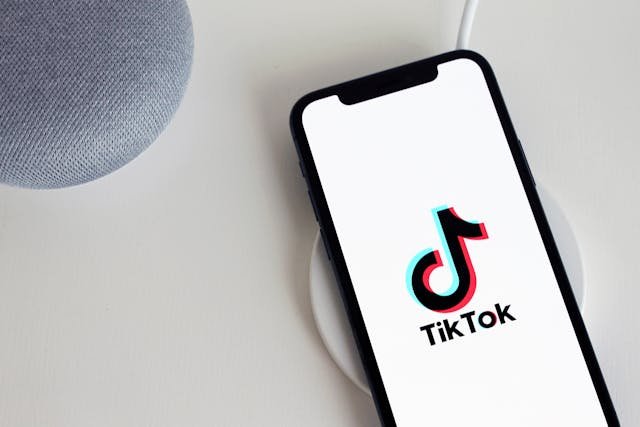Creating a yearbook is a wonderful way to capture and celebrate memories. With the rise of social media, yearbooks have evolved beyond printed pages into dynamic, interactive experiences. Using social media platforms, you can create a yearbook that is engaging, accessible, and memorable. In this article, we’ll explore creative yearbook ideas for social media, offering detailed, tactical, and actionable tips to make your digital yearbook stand out.
Highlighting Memorable Moments

One of the best ways to start your social media yearbook is by highlighting the most memorable moments of the year. These moments can include events, achievements, and everyday highlights that capture the essence of the year.
Capturing Key Events
Share photos and videos from key events throughout the year. This could include school dances, sports events, concerts, or any special celebrations. Make sure to tag the people involved and add descriptive captions that explain the significance of each event.
For example, you could post a series of photos from the school’s homecoming dance. Describe the event, mention any unique themes or activities, and tag students, teachers, and organizers. This not only commemorates the event but also engages the community by encouraging likes, comments, and shares.
Student Achievements
Celebrate student achievements by dedicating posts to their accomplishments. This could include academic awards, sports victories, artistic performances, or community service projects. Highlighting individual successes can boost student morale and foster a sense of pride.
Create posts that feature a photo of the student along with a short description of their achievement. You can also include quotes from teachers, coaches, or the students themselves to add a personal touch. Encourage the school community to congratulate and support each other in the comments.
Everyday Highlights
Don’t forget the everyday moments that make the school year special. Share candid photos and videos of students and teachers interacting, enjoying classes, and participating in school activities. These glimpses into daily life can make your yearbook more relatable and engaging.
For instance, share a video of students working on a group project, enjoying a sunny day on campus, or simply laughing together in the cafeteria. These posts can capture the spirit and camaraderie of the school community, making the yearbook feel more personal and inclusive.
Using Interactive Features
Social media platforms offer a variety of interactive features that can make your yearbook more engaging. Utilizing these tools can enhance user experience and encourage participation from students, teachers, and parents.
Polls and Quizzes
Create polls and quizzes to engage your audience and gather their input. You could ask questions about favorite moments, best dressed, most likely to succeed, or other fun superlatives. This not only makes your yearbook interactive but also provides content that reflects the opinions and personalities of the school community.
For example, create an Instagram poll asking students to vote for their favorite school event of the year. Share the results in a follow-up post, and use the feedback to create more content that resonates with your audience. Quizzes can also be used to test knowledge about school history or fun facts about teachers and students.
Stories and Highlights
Utilize Instagram and Facebook Stories to share quick updates and behind-the-scenes content. Stories are perfect for capturing spontaneous moments and can be saved as highlights on your profile for easy access later.
Create themed highlights such as “Sports Highlights,” “Event Recaps,” or “Teacher Spotlights.” This allows your audience to easily navigate and revisit different sections of the yearbook. Stories can include photos, videos, boomerangs, and even interactive elements like polls and question stickers.
Live Streams
Host live streams for significant events or special announcements. Live streaming allows real-time interaction with your audience, making them feel more involved and connected.
For example, live stream the school talent show, graduation ceremony, or a big sports game. Encourage viewers to comment and share their reactions during the live stream. After the event, save the video and share highlights to keep the memory alive.
Featuring Diverse Perspectives
A successful social media yearbook should reflect the diversity of your school community. Featuring a wide range of perspectives ensures that everyone feels included and celebrated.
Student Contributions
Invite students to contribute their own photos, videos, and stories to the yearbook. This can be done through social media takeovers, where a different student manages the school’s social media account for a day, or through dedicated submission forms.
Encourage students to share their unique experiences, whether it’s a day in their life, their favorite class, or a memorable moment with friends. Feature these contributions regularly to showcase the variety of experiences within the school community.
Teacher and Staff Spotlights
Highlight the contributions of teachers and staff by dedicating posts to them. Share their stories, achievements, and favorite memories from the school year. This not only shows appreciation but also gives students and parents insight into the lives of the educators who impact their community.
For example, you could feature a “Teacher of the Month” post, where a teacher shares their favorite lesson, a memorable moment with students, and some personal fun facts. Include photos of the teacher in action, whether they’re teaching, mentoring, or participating in school events.
Alumni Features
Incorporate stories from alumni to add depth and history to your yearbook. Share updates on what former students are doing now, their achievements, and how their experiences at school shaped their futures.
Create a series of posts titled “Where Are They Now?” featuring alumni who have gone on to do interesting things. Include interviews, photos, and updates on their current lives. This can inspire current students and strengthen the school’s community by connecting different generations.
Creative Visuals and Design
Visuals and design are the cornerstones of a compelling social media yearbook. They capture attention and convey the essence of your content. For startup founders, employing strategic and actionable visual design can elevate your yearbook’s impact. Here are some unique and innovative ways to enhance your visuals and design:
Creating Branded Templates
Branded templates provide consistency and professionalism to your social media yearbook. Design templates that align with your school’s colors, logo, and overall theme. These templates can be used for various types of posts, ensuring a cohesive look across all your content.
Use design tools like Canva or Adobe Spark to create these templates. Include elements like headers, footers, and placeholders for photos and text. Share these templates with students and staff to ensure everyone can contribute content that aligns with the overall aesthetic. This not only makes your yearbook visually appealing but also streamlines the content creation process.
Utilizing Motion Graphics and Animations
Motion graphics and animations can add a dynamic element to your yearbook posts, making them more engaging and eye-catching. These can include animated text, transitions, and graphic elements that bring your posts to life.
Create short animations that highlight key events, introduce different sections of the yearbook, or showcase memorable moments. Use tools like After Effects or simpler online platforms like Animoto to create these animations. Motion graphics can be particularly effective for social media platforms like Instagram and Facebook, where dynamic content tends to perform better.
Incorporating User-Generated Visuals
Incorporate visuals created by students, teachers, and parents to add diversity and authenticity to your yearbook. User-generated visuals can include photos, videos, illustrations, and even graphic designs contributed by the school community.
Host a contest or campaign encouraging students to submit their best photos or artwork. Feature the winning entries prominently in your yearbook. This not only enriches your content but also fosters a sense of ownership and pride among contributors.
Creating 360-Degree Photos and Virtual Tours
360-degree photos and virtual tours can provide an immersive experience, allowing your audience to explore school events and locations interactively. This can be especially engaging for virtual yearbooks, giving viewers a unique perspective.
Capture 360-degree photos of significant events, like the school carnival or graduation ceremony, and share them on platforms like Facebook, which supports 360-degree content. Additionally, create virtual tours of the school campus, highlighting key areas and memorable spots. This can be particularly appealing to alumni and prospective students.
Designing Infographics and Data Visualizations
Infographics and data visualizations can effectively present information in a visually appealing and easily digestible format. Use them to highlight statistics, achievements, and other data points related to the school year.
For example, create an infographic showcasing the number of events held, sports victories, or academic achievements. Tools like Piktochart or Infogram can help you design professional-looking infographics. Share these on your social media platforms to provide informative and engaging content.
Implementing Augmented Reality (AR) Features
Augmented Reality (AR) can add an interactive layer to your yearbook, making it more engaging and innovative. Use AR to bring photos and illustrations to life with animations, videos, or additional information.
For instance, create AR-enabled pages where scanning a photo with a smartphone reveals a hidden video or message. Use AR platforms like ZapWorks or Blippar to create these experiences. This cutting-edge technology can make your yearbook stand out and provide a unique experience for your audience.
Enhancing Photos with Creative Filters and Effects
Apply creative filters and effects to your photos to enhance their visual appeal and create a consistent look. Use photo editing software like Lightroom or Photoshop to adjust colors, add effects, and enhance the overall quality of your images.
Create a signature filter that reflects your school’s branding and apply it to all photos in your yearbook. This not only makes the visuals more cohesive but also adds a professional touch. Experiment with different effects, such as vintage looks, black-and-white, or color pops, to add variety and interest.
Developing Themed Visual Series
Develop themed visual series to add structure and excitement to your yearbook. Each series can focus on a different aspect of school life, such as sports, arts, academics, or extracurricular activities.
For example, create a “Week in Sports” series featuring highlights from various sports events, or an “Art Spotlight” series showcasing student artwork. Use consistent design elements and branding for each series to create a unified look. Promote these series in advance to build anticipation and ensure consistent engagement.
Utilizing High-Quality Typography
Typography plays a crucial role in the overall look and feel of your yearbook. Use high-quality fonts that are easy to read and align with your school’s branding.
Experiment with different font styles and sizes to create hierarchy and emphasis in your posts. Use bold and italic fonts to highlight key points, and ensure there’s enough contrast between text and background for readability. Tools like Google Fonts offer a wide selection of free, high-quality fonts to choose from.

Engaging Captions and Hashtags
Captions and hashtags are powerful tools for driving engagement and increasing the visibility of your social media yearbook posts. Crafting engaging captions and using strategic hashtags can make your content more discoverable and interactive. Here’s how to enhance your captions and hashtags with strategic and actionable advice:
Crafting Compelling Captions
Captions are more than just a few lines of text—they are an opportunity to tell a story, evoke emotions, and prompt interaction. Here’s how to craft compelling captions:
Telling a Story
Each caption should tell a story that complements the visual content. Use a narrative style to draw your audience in and make them feel connected to the moment you’re sharing.
For example, if you’re posting a photo from a school play, describe the anticipation backstage, the moment the curtain rose, and the applause at the end. This narrative approach can make your captions more engaging and memorable.
Adding Personal Touches
Personal touches in your captions can make your posts feel more authentic and relatable. Use first-person language and share personal anecdotes or reflections.
For instance, a caption for a graduation photo could read, “Watching these students walk across the stage today reminded me of my own graduation. The excitement, the pride, the sense of accomplishment—such a special moment!” Personal touches like these can foster a deeper connection with your audience.
Encouraging Interaction
Ask questions or include prompts in your captions to encourage your audience to engage with your post. Questions and prompts invite comments and foster a sense of community.
For example, post a photo of a science fair project and ask, “What was your favorite school project and why?” or “Share your best science experiment memory!” These prompts encourage followers to share their experiences and interact with your content.
Using Emojis and Formatting
Emojis can add a fun and visual element to your captions, making them more eye-catching and expressive. Use them to highlight key points or add emotion.
Additionally, use formatting to make your captions more readable. Break up long captions with line breaks or spacing, and use punctuation to guide the reader through the text. This makes your captions more engaging and easier to read.
Creating Unique Hashtags
Hashtags increase the discoverability of your posts and help you reach a broader audience. Here’s how to create and use unique hashtags effectively:
Branded Hashtags
Create a unique, branded hashtag for your yearbook. This makes it easy for your audience to find all related posts and participate in the conversation.
For example, if your school’s name is Greenwood High, you could use a hashtag like #GreenwoodYearbook2022. Encourage students, teachers, and parents to use this hashtag when they share their own photos and memories. This helps aggregate all related content and builds a sense of community.
Thematic Hashtags
In addition to a branded hashtag, use thematic hashtags for different sections or themes within your yearbook. These can help categorize content and make it easier for your audience to find specific types of posts.
For instance, use hashtags like #GreenwoodSports for sports-related posts, #GreenwoodArts for arts and theater content, and #GreenwoodMemories for general school memories. Thematic hashtags provide structure and enhance the user experience.
Trending and Popular Hashtags
Incorporate trending and popular hashtags to increase the reach of your posts. Research current trends and popular hashtags related to school life, education, and student achievements.
For example, hashtags like #HighSchoolMemories, #StudentLife, and #SchoolSpirit are popular and can attract a broader audience to your posts. Combine these with your unique and thematic hashtags to maximize visibility.
Encouraging User Participation
Encourage your audience to use your hashtags when sharing their own content. This not only increases the reach of your hashtags but also fosters a sense of community and participation.
Run campaigns or challenges that incentivize using your hashtags. For example, host a photo contest where participants must use your branded hashtag to enter. Feature the best entries on your social media platforms, giving credit to the contributors.
Monitoring and Engaging with Hashtags
Regularly monitor the use of your hashtags to see how they are performing and engage with the content shared by your audience. Like, comment, and share posts that use your hashtags to show appreciation and encourage more participation.
Use social media analytics tools to track the reach and engagement of your hashtags. This data can provide insights into what’s working and where you can improve. Engaging with your audience through hashtags can strengthen community bonds and increase overall engagement.
Promoting Interaction and Engagement

Promoting interaction and engagement is essential for creating a dynamic and successful social media yearbook. As a startup founder, leveraging strategic and actionable methods to engage your audience can significantly enhance the participation and overall impact of your yearbook. Here are some unique and effective strategies to foster engagement:
Social Media Takeovers
Social media takeovers can provide a fresh perspective and engage different segments of your audience. Allow students, teachers, or alumni to take over your school’s social media account for a day. They can share their experiences, favorite memories, and behind-the-scenes glimpses into their daily lives.
Create a schedule for takeovers and promote them in advance to build anticipation. Provide guidelines to ensure the content aligns with your yearbook’s theme and values. After the takeover, share highlights and key moments to extend the engagement beyond the takeover day.
Interactive Stories and Polls
Leverage Instagram and Facebook Stories to create interactive content that encourages immediate participation. Use polls, question stickers, and sliding scales to engage your audience in real-time.
For example, you could run a series of polls asking students to vote on their favorite school events, classes, or teachers. Use the question sticker to invite students to share their best memories or funniest moments from the school year. Highlight responses in your Stories to show appreciation and encourage more participation.
Collaborative Projects
Organize collaborative projects that involve contributions from multiple students and teachers. This could include a digital art project, a group video montage, or a collaborative storytelling initiative.
For instance, create a video project where students contribute short clips sharing their favorite school memory or a piece of advice for future students. Compile these clips into a single, cohesive video and share it on your social media platforms. This not only engages participants but also provides valuable content for your yearbook.
Virtual Events and Contests
Host virtual events and contests to keep your audience engaged and excited about the yearbook. These events can range from talent shows and trivia nights to art competitions and writing contests.
Promote these events through your social media channels, and use live streaming to broadcast them. Encourage participants to share their entries or performances using a specific hashtag. Offer prizes for the best entries to incentivize participation. After the event, share highlights and winners on your social media platforms to keep the momentum going.
User-Generated Content Campaigns
Encourage your audience to contribute content to your yearbook through user-generated content (UGC) campaigns. This could involve sharing photos, videos, or stories using a dedicated hashtag.
Launch a campaign inviting students to share their best photos from the school year. Feature the best submissions on your social media accounts, giving credit to the contributors. This not only creates a sense of ownership and pride among participants but also generates a wealth of content for your yearbook.
Shout-Outs and Recognition Posts
Recognizing and appreciating individual contributions can boost engagement and create a positive community atmosphere. Share shout-out posts highlighting students, teachers, and staff who have made significant contributions to the school community.
For example, create posts recognizing student leaders, outstanding athletes, or dedicated teachers. Share their stories and achievements, and invite others to leave comments of appreciation. This fosters a supportive environment and encourages more people to engage with your content.
Behind-the-Scenes Content
Sharing behind-the-scenes content can make your audience feel more connected to the yearbook creation process. Show the work that goes into compiling the yearbook, from selecting photos to designing pages.
Use Instagram Stories or Facebook Live to give real-time updates on the progress of the yearbook. Share sneak peeks of the content and invite feedback from your audience. This transparency can build anticipation and make your audience feel like they are part of the process.
Engaging Captions and Call-to-Actions
Craft engaging captions that prompt your audience to take action. Use questions, challenges, or prompts to encourage comments and shares.
For example, post a photo from a recent school event and ask your followers to share their favorite memory from that event in the comments. Or, post a photo of a school landmark and challenge students to share a creative caption. Including clear calls-to-action in your captions can drive more interaction and engagement.
Celebrating Milestones and Anniversaries
Highlight important milestones and anniversaries related to your school. This could include the school’s founding anniversary, significant achievements, or the graduation of a notable class.
Share posts that commemorate these milestones and invite your audience to share their own memories and reflections. For example, create a post celebrating the school’s 50th anniversary and ask alumni to share their favorite memories from their time at the school. This not only engages current students but also reconnects alumni with the school community.
Conclusion
Creating a compelling social media yearbook requires a blend of creativity, strategic planning, and community engagement. By highlighting memorable moments, utilizing interactive features, featuring diverse perspectives, and employing creative visuals and design, you can craft a yearbook that truly captures the essence of your school year.
As a startup founder, leveraging these techniques not only makes your yearbook visually appealing and engaging but also fosters a sense of community and pride among students, teachers, and parents. Remember to use consistent branding, encourage user participation, and stay authentic in your storytelling.
Read Next:
- A Director’s Handbook: What Does a Director of a Business in the UK Actually Do?
- The Crucial Difference Between ‘Ltd’ and ‘Limited’ in Company Names in the UK
- Tax Identification for Freelancers in the UK: A Step-by-Step Guide
- Ensuring Legal Compliance: How to Register Your Company in the UK
- What Every UK Business Needs to Know About Tax Identification
- Shelton Street Secrets: Setting Up Your Business at London’s Hub





















Comments are closed.